12 things to get your home ready for winter
Now that cool fall weather is here, it's the perfect time for home maintenance.
Products are chosen independently by our editors. Purchases made through our links may earn us a commission.
It's officially last call for anyone who has yet to prepare their home for the coming winter storms. Properly weatherizing your home can save you $400–$500 each year in energy costs alone and prevent damage from ice dams and other winter hazards, so it’s best to act sooner than later.
If you want to take advantage of the autumnal weather to get your home ready for winter, we’ve got you covered with these 12 steps—complete with links to the most highly-rated products you’ll need to complete them. Before you know it, you’ll be sipping mulled cider in your warm, cozy home.
1. Clean your gutters
Keeping your gutters clean and free of debris is an important part of end-of-year maintenance. If water can’t drain properly, it could seep under your roofing and into your home.
This is especially true for areas that get a lot of snow: Meltwater tends to refreeze, creating an ice dam that, in turn, traps even more water. It’s a problem that gets worse over time and can result in costly water damage.
If you want to clean out gutters yourself, you’ll need a ladder equipped with a stand-off stabilizer, some gloves, and maybe a gutter scoop depending on the consistency of the gunk up there.
If you’d prefer an alternative, or have gutters that aren’t easily accessible, there are gutter scoops on telescoping poles that can help you clean from the ground or reach further while up a ladder, which will cut down on the number of times you need to climb up and down. (See more gutter fixing tips.)
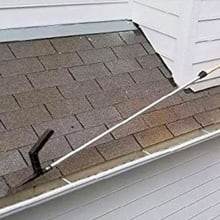
Get rid of gutter gunk faster with a telescoping scoop.
2. Trim back branches

Keeping branches trimmed is a great way to prevent future damage to your roof, windows, or siding.
A pole saw is a great tool for roof and yard maintenance. Heavy snowfall can bring down weak branches, providing a hazard for passers-by and potentially damaging your home.
It’s especially important to keep tabs on any branches that overhang your roof. When those fall, they can scrape away your roof’s protective outer layer, trapping snow, and letting water pool. Again, winter is just around the corner, and some preventative maintenance is a lot less expensive than fixing water damage.
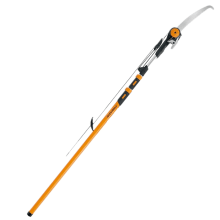
Cut down problem branches before they break under the weight of winter snow.
3. Stop heating your home when you’re not there

The Nest Learning Thermostat can be controlled by dial or by smart app, and it is our best overall smart thermostat.
As the weather shifts towards cold and we start to depend on our home heating systems, it’s a good idea to invest in a programmable thermostat.
These smart devices let you control your HVAC from your phone and ensure you’ll be coming home to a comfortable climate, without wasting energy heating an empty house.
In our testing of smart thermostats, we determined the Google Nest smart thermostat is the best one currently available. It's easy to install, works with Alexa and Google, and can make automatic adjustments to the temperature at home to save you money.

Avoid wasting heat with a smart thermostat.
4. Block door and window drafts

Windows and doors that don’t shut completely can allow quite a lot of heat to escape—weatherstripping is a great way to create a more airtight seal.
Not all doors and windows create a perfect seal when they’re closed. Gaps can allow heat to escape and for cold air to draft into your home. This is where weatherstripping can help. Weatherstripping is such an integral part of home weatherization that the Department of Energy has an entire page dedicated to it.
Before you start weatherstripping, you’ll need to measure the perimeters of your windows and doors. Next, determine the width and depth of the material you need. Check the weatherstripping to see if they recommend applying it just one or both of the surfaces creating the seal. Once you have a total required length, it’s recommended you add an extra 5–10% to accommodate any waste.
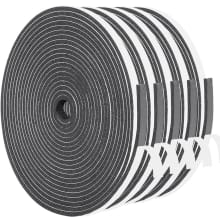
Diminish the draft from doors and windows with weatherstripping.
5. Insulate your windows

We were initially skeptical about how effective window film could be, but research suggests it's actually a great tool to have in your home weatherization toolkit.
Putting a thin film of plastic on your windows will keep your home warmer this winter.
I’ll be honest—when I first saw this technique I was skeptical it would have any real effect. According to the science, though, a simple film covering can help improve a window's ability to retain heat by about 33%.
If you have glass doors or large windows—especially older ones that lack modern insulation techniques or UV treatments—you’re probably losing a lot of heat. Shrink wrap kits like this go a long way toward keeping the heat inside your home and are relatively cheap, especially when you factor in the savings you'll see on your utility bills.
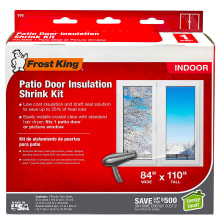
Cut down on heat loss by adding another layer of insulation to your windows and glass doors.
6. Seal up any cracks or crevices
Your windows might be perfectly weatherstripped, but that won’t do you any good if there are small gaps around the edges of its frame. Air leakage is common in many areas of your home. Using a piece of paper or incense, double-check that the following areas aren’t allowing any drafts in:
- Around the top of your foundation or any other place where two different materials meet.
- Around the edges of doors and window frames—especially basement windows.
- Any openings in the walls of your house: spigots, electrical outlets, dryer vents, or pipes.
If the sealed area is going to be visible and it’s between two clearly defined edges, it might be better to get a clear sealant.
In cases where the edges aren’t uniform, an expanding foam sealant can work well to block off all the places where heat could escape.
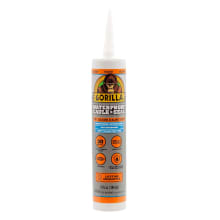
Permanently seal up drafty gaps with sealant.
7. Stop under-door drafts
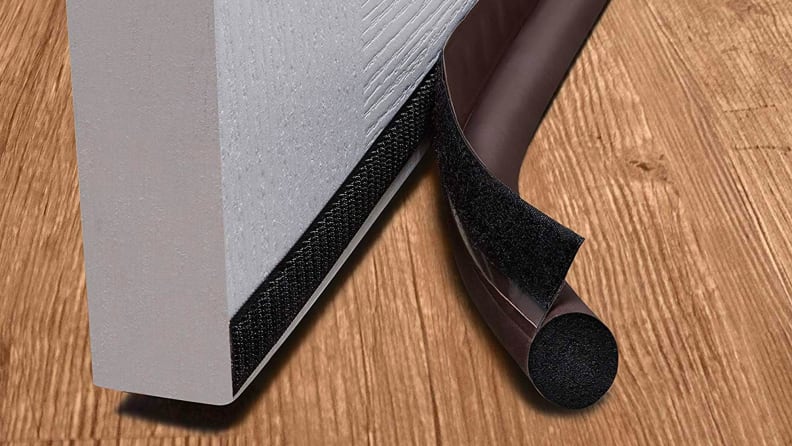
Draft stoppers brush against the ground all day—look for ones that affix with a hook and loop system, so they can be more easily removed for cleaning.
Sometimes you have a room in your home that’s colder than the rest. If you have rooms that are particularly difficult to insulate or if you’re using zoned heating, you need to find ways to stop cold air from drafting throughout your home. Under-door draft stoppers are great at keeping chilly drafts from seeping into your nicely-heated spaces.
This draft stopper from Deetoolman affixes to your door via a hook and loop strip, so it’s easy to remove for cleaning or repositioning. It’s also one of the highest-rated options on Amazon, with hundreds of reviewers calling out how smoothly it slides compared to others they’ve tried.
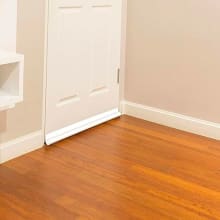
Stop hot air from leaking out under doors with a draft stopper.
8. Clean the muck from your hot water heater’s tank
It’s always a good idea to make sure your hot water heater is in working order before you really start to need it. Sediment will gradually gather inside the tank over time, reducing your water heater’s efficiency and lifespan while increasing your energy bills.
If you opt to do it yourself, a descaler like this one by Flow-Aide can help clean out the sediment quickly, ensuring clean, clear water, and more efficient heating.
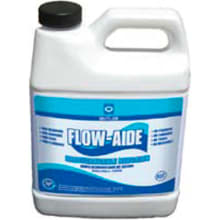
Keep your hot water heater sediment-free with descaler.
9. Replace your heating system's air filters

A clogged filter is like trying to accelerate with one foot on the brake—a clean filter will use less energy to circulate the same amount of air throughout your home.
With colder weather around the corner, it’s a great idea to make sure your heating system is fully operational before you really start to need it. Energy Star recommends you check your filter every three months, at most, to ensure your HVAC isn’t working harder than it needs to be.
A clogged filter disproportionately stresses your system to draw in the same amount of air, leading to energy waste and higher utility bills.
Keeping a clean filter can also help to reduce the recirculation of allergens, improving your home’s overall air quality.
Before you order an air filter, though, make sure you double-check the dimensions your specific system requires. There are a lot of different filter sizes, so you’ll need to know what height, width and depth works best for your home.
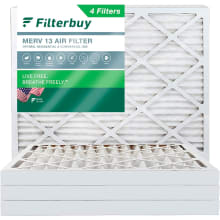
Replace your HVAC filters to keep your heating system running efficiently.
10. Keep heat out of your attic

Rising heat can escape into your attic, creating meltwater on your roof instead of keeping you and your family warm—keep it contained with a stairway insulator.
Once you’ve brought the holiday decorations and sweaters down from storage, it’s time to seal up your attic for the winter. Warm air rises, and heat drifting into your attic isn’t keeping you and your family warm.
What’s worse is a warm attic is part of what causes ice dams on your roof—and trapped meltwater can cause serious damage to your home. To help reduce energy bills and prevent a winter disaster, install a stairway insulator over the entrance to your attic.
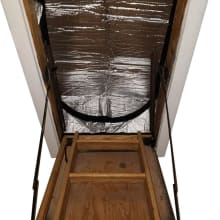
Keep heat from escaping into your attic with this insulation cover.
11. Insulate your pipes

Foam pipe insulation with this form factor can be quickly snapped around pipes—a much easier installation than alternatives.
If you have a cellar with exposed pipes or an RV, fall is a great time to make sure your plumbing is protected from the upcoming freeze. If you’ve ever had to manually wrap insulation around your pipes, you know what a chore that can be. If you haven’t, take our word for it—foam tubes are the way to go.
You can either get pre-cut lengths of tube or whole tubes that you manually cut. The pre-cut tubes make installation significantly easier. Remember to get about 10% more than what you need to cover any waste.
If you do have extra left over once the job is finished, keep in mind these foam tubes are an incredibly versatile product—many reviews of similar products are from customers who used them for projects unrelated to insulation.
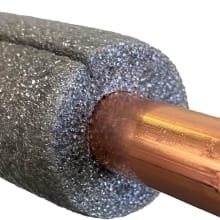
Prevent pipes from freezing with insulation.
12. Insulate everything else, too!

Looking for insulation that’s a bit safer to handle? This recycled denim is great for DIY home repairs and crafts alike.
Do you need more insulation but want something less irritating than fiberglass? This eco-friendly insulation is made from recycled denim. This material is versatile: You can use it to help insulate, wrap pipes to prevent them from freezing, and help weatherstrip doors.
Like the tube insulation, this is also a great material to have around if you’re into DIY crafts, decorating, or need last-minute stuffing for a costume.
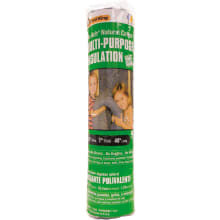
This cotton insulation is a versatile way to keep your heat inside.
How to maintain your home’s climate
Preparing your home for fall and winter is about reinforcing the boundaries between your cozy home and the the wet, cold weather outside. A properly weatherized home will ensure lower energy bills during cold and hot seasons alike, and are just more comfortable to be in.
If you’ve tried the above tips and still find yourself struggling to keep your home well-heated, you can request an energy audit or enroll in your local weatherization assistance program, which may be partially or completely subsidized based on your income level.
There are also tax credits, rebates and other financing options available to those looking to make more substantial energy efficiency upgrades to their home.


